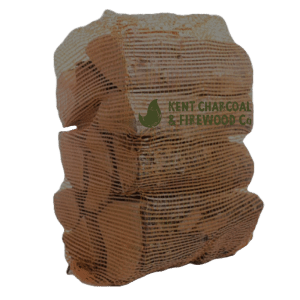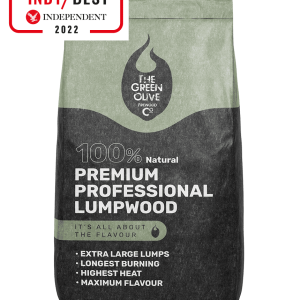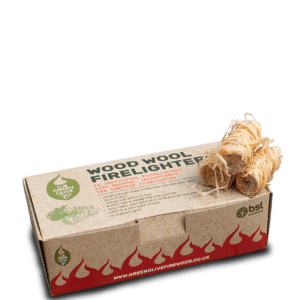The Art of Charcoal: Techniques and Tips for Cooking

Introduction
Charcoal has long been a preferred fuel for grilling and barbecuing, celebrated for its ability to impart rich, smoky flavours to food. Whether you’re a seasoned grill master or a weekend barbecue enthusiast, understanding how to use charcoal effectively can elevate your cooking experience.
One of the primary benefits of using charcoal is its versatility. It can be used for various cooking methods, from direct grilling to slow roasting and smoking. Additionally, charcoal provides a higher heat output compared to gas, allowing for better searing and caramelisation of meats.
In this article, we will explore the different types of charcoal available, focusing on lump wood charcoal and charcoal briquettes. You’ll learn about their characteristics, benefits, and best uses, equipping you with the knowledge to make informed choices for your next grilling session.
Types of Charcoal
Lumpwood Charcoal
Characteristics: Lumpwood charcoal is made from pure hardwood without any additives. It is created by carbonising wood in the absence of oxygen, resulting in natural chunks that retain the wood’s inherent properties.
Benefits:
- Burns Hotter: Lumpwood charcoal typically burns at higher temperatures than briquettes, making it ideal for high-heat cooking.
- Quick Ignition: It lights faster than briquettes, allowing you to start grilling sooner.
- Produces Less Ash: With lower ash production, lump wood charcoal requires less frequent cleaning after use.
Best Uses:
- High-Heat Cooking: Perfect for searing steaks and grilling vegetables.
- Quick Grilling Sessions: Ideal for spontaneous barbecues where time is of the essence.
- Natural Flavour Enhancement: Provides a purer smoke flavour that enhances the taste of grilled foods.
Charcoal Briquettes
Characteristics: Charcoal briquettes are made from compressed wood by-products mixed with additives to help them ignite and maintain their shape. They are designed to provide a consistent burn.
Benefits:
- Consistent Burn: Briquettes are engineered to burn at a steady temperature for extended periods, making them reliable for longer cooking sessions.
- Longer Cooking Times: They are ideal for low and slow cooking methods such as smoking or roasting.
- Cost-Effective: Generally cheaper than lump wood charcoal, briquettes offer an economical option for regular grilling.
Best Uses:
- Low and Slow Cooking: Excellent for smoking meats or slow-roasting large cuts.
- Longer Grilling Sessions: Suitable for outdoor parties where the grill needs to remain hot for an extended period.
By understanding the differences between lump wood charcoal and charcoal briquettes, you can select the best type based on your cooking needs and preferences
-

Kiln Dried Hardwood Logs Bulk Bags
Price range: £169.00 through £299.00 Select options This product has multiple variants. The options may be chosen on the product page -

Kiln Dried Hardwood Logs
Price range: £24.99 through £259.00 Select options This product has multiple variants. The options may be chosen on the product page -

Premium Professional Lumpwood Charcoal 10kg
Price range: £29.99 through £199.99 Select options This product has multiple variants. The options may be chosen on the product page -

Wood Wool Firelighter 24pack
Price range: £4.99 through £29.00 Select options This product has multiple variants. The options may be chosen on the product page

Preparing Your Charcoal Grill
Lighting Charcoal
Lighting your charcoal grill properly is essential for achieving the right cooking temperature and ensuring an even burn. Here are some recommended methods for lighting charcoal:
- Chimney Starter: This is one of the most efficient and popular methods. Fill the chimney with lump wood charcoal or briquettes, place crumpled newspaper or fire starters underneath, and light the paper. The chimney allows for optimal airflow, igniting the charcoal quickly and evenly.
- Triangle Pack: Arrange a small pile of charcoal in a triangle shape, placing fire starters or crumpled newspaper in the centre. Light the paper to ignite the charcoal.
- Fire Starters: Use natural fire starters made from recycled materials or wax-coated products. Place them among the charcoal and light them for a quick ignition.
- Lighter Fluid: While effective, using lighter fluid can impart a chemical taste to food. If you choose this method, let the fluid soak into the charcoal for a few minutes before lighting to reduce any lingering odour.
Tips for Achieving an Even Burn and Optimal Temperature:
- Ensure good airflow by keeping the grill vents open when lighting.
- Wait until the coals are covered in white ash (about 15-20 minutes) before cooking; this indicates they are ready for grilling.
- Spread the coals evenly across the grill for consistent heat distribution.
How Much Charcoal to Use
The amount of charcoal you need depends on your desired cooking temperature. Here are some guidelines:
- High Heat (232°C+): Use a full chimney of charcoal or about 100 briquettes. This is ideal for searing meats and achieving that perfect crust.
- Medium Heat (177°C to 232°C): Use half to three-quarters of a chimney, which is approximately 50 to 75 briquettes. This heat level is great for general grilling and cooking various foods evenly.
- Low Heat (121°C to 177°C): A quarter chimney full will suffice, roughly around 25 briquettes. This setup is perfect for slow-cooking large cuts of meat or smoking.
Charcoal Grill Setups
Two-Zone Setup
The two-zone setup is a popular configuration that allows you to cook food at different temperatures simultaneously.
- Description: Place hot coals on one side of the grill, leaving the other side empty for indirect heat. This arrangement creates a hot zone for direct cooking and a cooler zone for indirect cooking.
- Benefits: This flexibility allows you to sear meats over direct heat while finishing them off gently on the cooler side, making it ideal for thicker cuts or foods that require longer cooking times.
Three-Zone Setup
The three-zone setup provides even more versatility in cooking multiple items at different temperatures.
- Description: Create high, medium, and low heat zones by stacking charcoal in varying amounts across the grill. For example, pile more coal on one end for high heat, while leaving less coal in the middle and minimal on the other end for low heat.
- Ideal Uses: This setup is perfect when grilling various items simultaneously, such as steaks that need high heat and vegetables that require gentler cooking.
Snake Method
The snake method is an excellent technique for low-and-slow cooking, particularly suited for smoking meats like chicken.
- Description: Arrange unlit coals in a snake-like formation along the edge of your grill. Light one end with a few lit coals; as they burn down, they will gradually ignite the unlit coals along the snake.
- Benefits: This method maintains consistent low temperatures over extended periods, making it ideal for slow-cooking large cuts of meat without frequent refuelling.

Cooking Techniques with Charcoal
Direct Grilling
Direct grilling is one of the most common cooking methods used with charcoal, perfect for achieving that delicious char and smoky flavour.
- Ideal for Thin Cuts of Meat: This method works best for thin cuts such as steaks, burgers, and sausages. The high heat from the direct flames sears the meat quickly, locking in juices and enhancing flavour.
- Tips for Achieving Perfect Sear Marks and Juicy Results:
- Preheat the Grill: Ensure your grill is hot before placing the meat on it. A well-preheated grill helps achieve those coveted sear marks.
- Don’t Flip Too Soon: Allow the meat to sear undisturbed for a few minutes before flipping. This creates a good crust and prevents sticking.
- Use a Meat Thermometer: For perfect doneness, use a meat thermometer to check internal temperatures. Aim for 55°C for medium-rare steaks and 70°C for burgers.
Indirect Grilling
Indirect grilling is ideal for larger cuts of meat that require longer cooking times.
- Best for Larger Cuts: Whole chickens, roasts, and ribs benefit from this method as it allows them to cook evenly without burning on the outside.
- How to Use Water Pans to Maintain Moisture and Temperature Control:
- Place a water pan in the cooler zone of your grill. This helps regulate temperature and adds moisture to the cooking environment.
- The water pan can also catch drippings, preventing flare-ups and adding flavour to your meal.
Smoking with Charcoal
Smoking with charcoal adds depth and complexity to your dishes, making it a favourite technique among barbecue enthusiasts.
- Adding Wood Chips or Chunks: Incorporate wood chips or chunks into your charcoal setup to infuse your food with rich flavours during long cooks. Soak the wood chips in water for about 30 minutes before adding them to prevent them from burning up too quickly.
- Recommended Wood Types for Different Meats:
- Citrus: Excellent for pork, providing a strong, robust flavour.
- Applewood: A milder option that pairs beautifully with chicken and fish, adding a subtle sweetness.
- Whiskey Oak: Best used sparingly; its intense flavour is great for beef but can overpower lighter meats.
Safety and Maintenance Tips
Grill Safety
Ensuring safety while using your charcoal grill is paramount:
- Importance of Proper Ventilation: Always grill outdoors in well-ventilated areas. Avoid using charcoal indoors or in enclosed spaces, as this can lead to dangerous carbon monoxide build-up.
- Keep Flammable Materials Away: Ensure that flammable materials (e.g., paper, cloth) are kept at a safe distance from the grill to prevent accidental fires.
Cleaning Your Grill
Regular maintenance ensures that your grill performs optimally and lasts longer:
- Best Practices for Maintaining Your Grill After Use:
- Clean Grates After Each Use: While the grill is still warm (but not hot), use a grill brush to clean off any residue from the grates. This prevents build-up and makes future cooking easier.
- Empty Ashes Regularly: After your grill has cooled down completely, remove ashes from the bottom of the grill. This helps maintain airflow and prevents rusting.
- Check for Wear and Tear: Regularly inspect your grill for any signs of damage or wear. Replace parts as necessary to ensure safe operation.
Pro Tip
After grilling, leave a thin layer of fat on your grill grates. This acts as a protective barrier against rust, helping to prolong the life of your grill.
By following these cooking techniques and safety tips, you can enjoy delicious meals while ensuring a safe grilling experience.
Conclusion
In conclusion, charcoal is an incredibly versatile fuel for cooking, offering a range of benefits that enhance the grilling experience. Whether you choose lump wood charcoal for its high heat and natural flavour or opt for charcoal briquettes for their consistent burn and cost-effectiveness, both types can elevate your outdoor cooking. The ability to use different grilling techniques—such as direct grilling, indirect grilling, and smoking—further showcases the adaptability of charcoal in preparing delicious meals.
Ignite Your Grilling Passion with Kent Charcoal & Firewood Ltd!
At Kent Charcoal & Firewood Ltd, we are dedicated to supplying high-quality lump wood charcoal and briquettes sourced from sustainable practices. Our charcoal is perfect for all your grilling needs, ensuring you can enjoy delicious meals while supporting environmentally friendly choices.
Visit our website today to explore our range of premium charcoal products and elevate your barbecue experience!